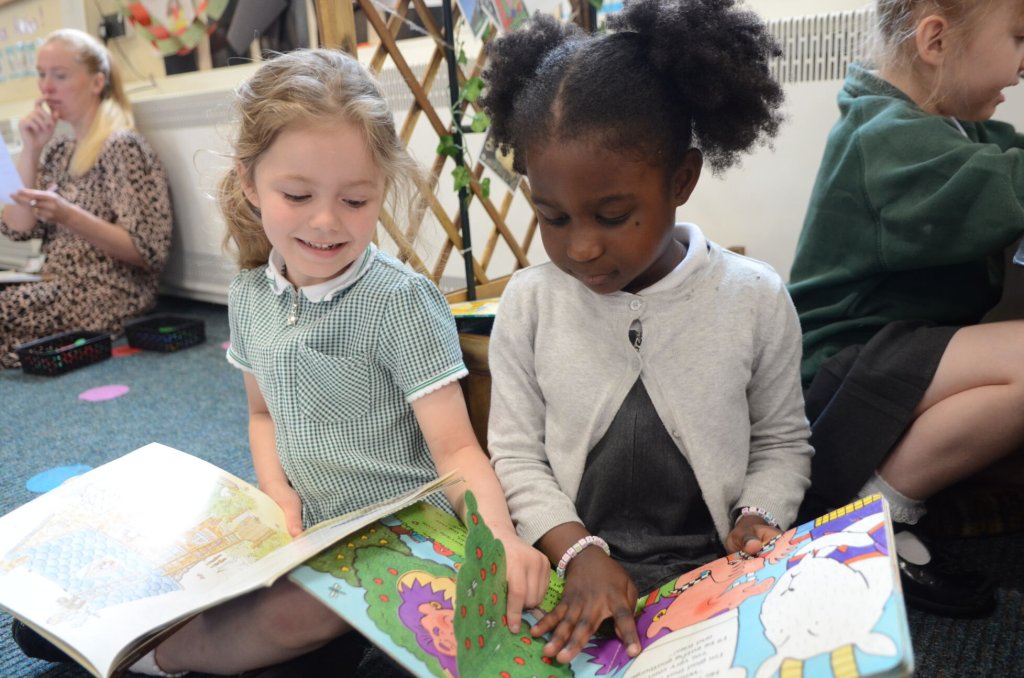How can we continue to support children and families in our ‘new normal’ practice?
October is the awareness month for domestic violence and now arguably needs more attention than ever. It is estimated that domestic violence cases have risen by 20% worldwide over the duration of lockdown. This doesn’t come as a surprise considering our usual activity with other people and being outside/away from our homes has been significantly reduced – making it harder for DV to be noticed and support and help to be offered. We also know that DV normally occurs and/or amplifies as a result of stressful life factors.
Over the last 6 months, it’s fair to say we have all experienced stress, we have all had to adapt to a new way of life. However, times have been extremely hard for a lot of people; people have lost their jobs, experienced high levels of anxiety and/or depression, lost their loved ones, being socially restricted from seeing their friends and family. The above factors could create a negative cycle for example, losing a job = unemployment, unable to find work = no money coming in = lack of food, unable to pay bills or rent = all building up and adding stress to a family which unfortunately, can result in triggering people to become violent and/or abusive. Having said this, none of this leads to an excuse to abuse someone.
As a nation, we had all been told to “stay home and stay safe” – but the reality is that for some people, home isn’t safe. Women’s Aid released data in the beginning of lockdown, where survivors of DV were coming forward and saying that their abuse had escalated within lockdown. Infact, 72% of survivors of DV who contacted Women’s Aid stated that their abuser had more control over their lives since the beginning of covid-19 and that the abusive behaviour was escalating.
Thankfully our government has noticed and acknowledged that DV rates are rising. There are now billboards up around city’s referring to DV, and adverts on the radio and TV showing/telling victims of DV where and how to get help. The government has released a detailed document informing us of all the different ways in which we can either report DV as a witness, or how to get help if you are the victim yourself.
The above link also refers to support charities and organisations for children and young people who are witness to domestic violence at home.
Spotting the signs:
Domestic violence can happen to anyone and is traumatic for anyone who is involved, exposed to or witness to. It is estimated that 1 in 7 children will experience DV throughout their childhood. We know the detrimental impact that DV has on children who witness this happening in their home (If you don’t – you can read more about his here) and now that children have returned to school, it is our job to be vigilant and look for signs and indicators that domestic abuse has happened, or is happening at home. Remember, the earlier we can offer help and support to these families, the better.
So, how do we recognise signs that children may have been exposed to DV?
- Are they behaving differently? Are they shying away from people or became withdrawn and quiet? Or are they acting and behaving aggressively with their peers?
- Are they acting out in class, and being more disruptive than usual?
- Are they more anxious than usual? Are they showing signs of depression?
- Are they exhausted and falling asleep in class?
- Are they not eating like they used to?
- Are they not attending school? Or when they do, they say they don’t feel well and want to go home?
- Do they mention anything about being worried about their parents, carers or siblings?
- Are they showing any physical symptoms of exposure to stress or abuse themselves?
- Are they drawing disturbing images or using toys/playing in a disturbing and/or aggressive way?
Above are just some of the indicators that we as professionals need to be vigilant and aware that something could be happening at home.
How to approach the situation?
As we have a duty of care when it comes to safeguarding the children that we work with, we must be professionally curious. A good way of supporting pupils’ welfare can be through using the ‘3 houses assessment’ which opens discussion points on what makes the child or young person feel happy, sad and what their dreams are. Quite often these discussions result in disclosures or will give a bigger picture of what the child’s lived experience is like.
If you believe that something isn’t right, firstly – speak to the child.
- Ask the child are they ok? Do not ask any leading questions, try to keep the conversation open and flowing.
- When it’s the end of the school day, monitor the playground and see who is picking the child up. Speak to them if you can and share any concerns you have about the child in class – IF it is safe to do so – if you believe this will not put the child at risk of any harm.
- Make sure you record any concerns and report to your DSL. Make sure any communication/conversations had with family are also recorded.
If a disclosure is made:
- Listen, really listen! Stop what you’re doing, maintain eye contact and remain approachable and non-judgemental with your facial expressions and body language.
- Reassure them that you are going to do your best to help them and that they have done the right thing by speaking about it.
- Explain what you are going to do next – that you can not keep this a secret as you need to protect them from harm.
- Record and Report when possible, record this as accurately as possible and report immediately to your DSL.
What happens next?
The Designated Safeguarding Lead will be able to see a record of concern for that child on the school system and will know when or if it is appropriate to make a referral to children’s services. It may be that the school try to engage the family initially through Early Help, which at present is far more likely due to the threshold for need being so high in many local authorities. The DSL must also utilise other partner agencies and any information that they may have shared previously – are there any Operation Encompass notifications, for example, for this family. If any professional feels that the child is at immediate risk of harm, they should ring 999 immediately. We must remember that even when “no further action” is taken, this does not mean we should stop reporting our concerns.
So, in conclusion, remember to be vigilant, approachable and a good listener. Remember to record any concerns and continue to report concerns – even if they are initially not taken further. If we know that something such as DV is taking place – we can begin to offer help and support and the earlier we do this, the better.
Learn more about Domestic Abuse…
If you would like to learn more about how to spot the signs of domestic abuse and how to support those going through it; One of our Keynote speakers at our safeguarding conference next year is Jane from the Salford Survivors Project – which is a charity set up in the borough of Salford who work hard to support families and individuals who are victims of domestic abuse. Jane’s Story is powerful and engaging: read it on The Survivor Project.
We also have Siobhan Collingwood as a keynote at this conference focusing on Aces – as domestic violence is classed as a traumatic life event for a child, Siobhan will also be discussing the impact that abuse such as DV has on children.
If you would like to know more about the conference and our speakers then here is the link with more information.












